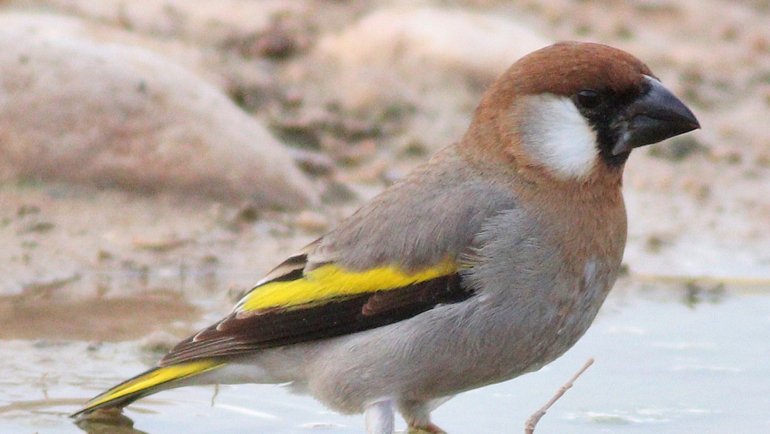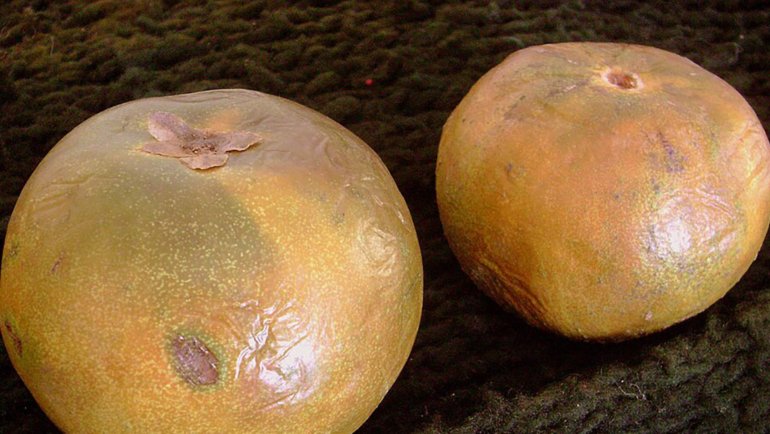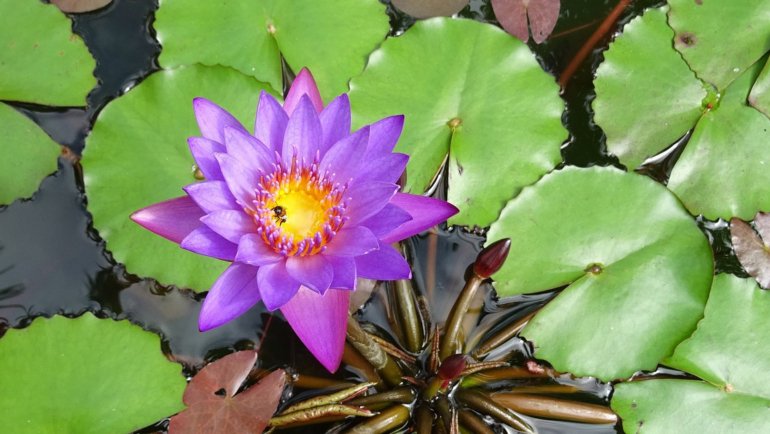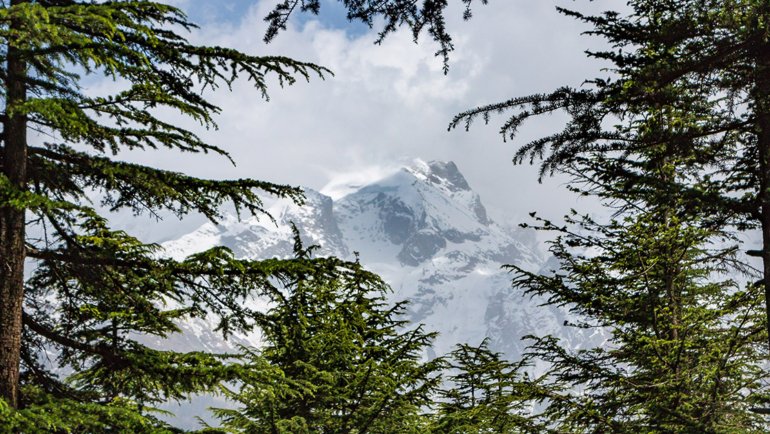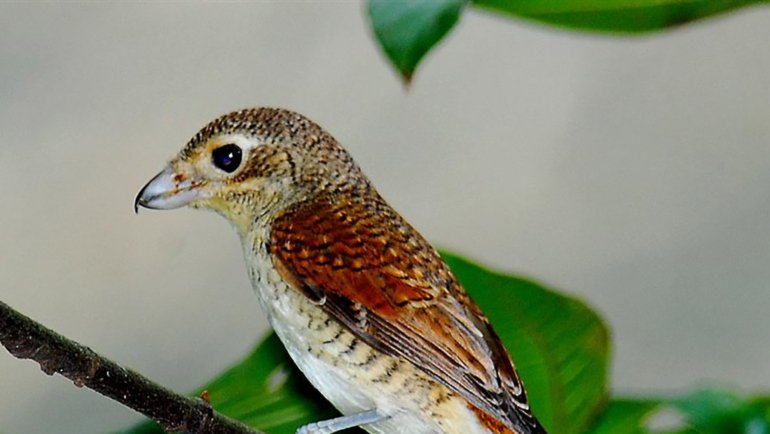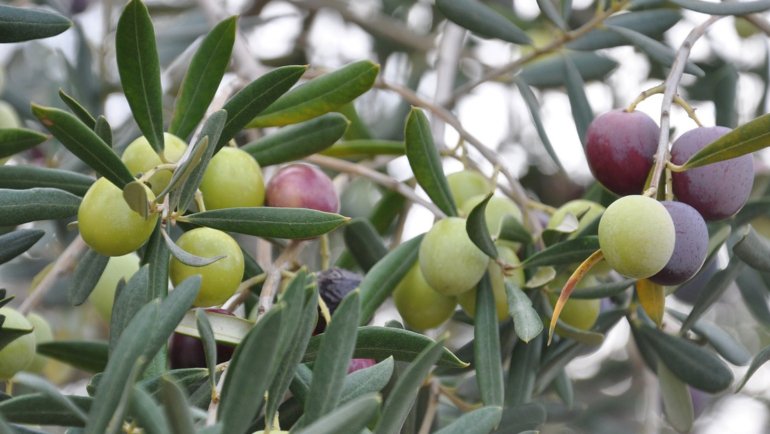El Salvador, the smallest and most densely populated country in Central America, is a land rich in culture, history, and biodiversity. Often overshadowed by its tumultuous past, El Salvador is home to a variety of flora and fauna that defy the country’s size. One such natural wonder is its national tree, the Maquilishuat.
Did you know that the Maquilishuat tree’s thin wood is highly prized for joinery work, due to its lightweight and unique amber-yellow color with purplish veins? Buckle up, because you’re about to discover the Maquilishuat tree in all its glory!
Discover The Maquilishuat, the National Tree of El Salvador
The Maquilishuat, scientifically known as Tabebuia rosea, is a breathtaking sight, especially during its flowering season. It stands tall with a maximum height of up to 49 feet (15 meters) and occasionally reaching up to 82 feet (25 meters).
The tree is renowned for its large, majestic pink flowers, whose color intensity varies, creating a mesmerizing gradient across the branches. These flowers are not only a feast for the eyes but also blanket the ground beneath the tree, creating a breathtaking landscape.
The leaves of the Maquilishuat are compound, typically made up of five leaflets. These leaflets are elliptical and can be anywhere from 5 to 8 inches long. The bark is relatively smooth with some rough patches, but what truly sets it apart is its wood.
The wood is thin and lightweight, boasting an amber-yellow color streaked with purplish veins. This distinctive feature makes it highly sought after for joinery and fine woodworking projects.
Where Does the Maquilishuat Grow?
The Maquilishuat prefers tropical climates and is native to a range of environments within El Salvador. It thrives particularly well in the Savannah regions of the country. El Salvador experiences two primary seasons—dry and rainy.
However, the Maquilishuat tree is a hardy species that has adapted well to these conditions. During February and March, the tree comes into full bloom, coinciding with one of the dry periods of the country, making it a spectacular natural event that people look forward to every year.
Despite being native to El Salvador, the Maquilishuat also grows in other parts of Central America and even extends into parts of South America. However, its cultural and ecological significance is most deeply rooted in El Salvador, where it has enjoyed the status of the national tree since 1939.
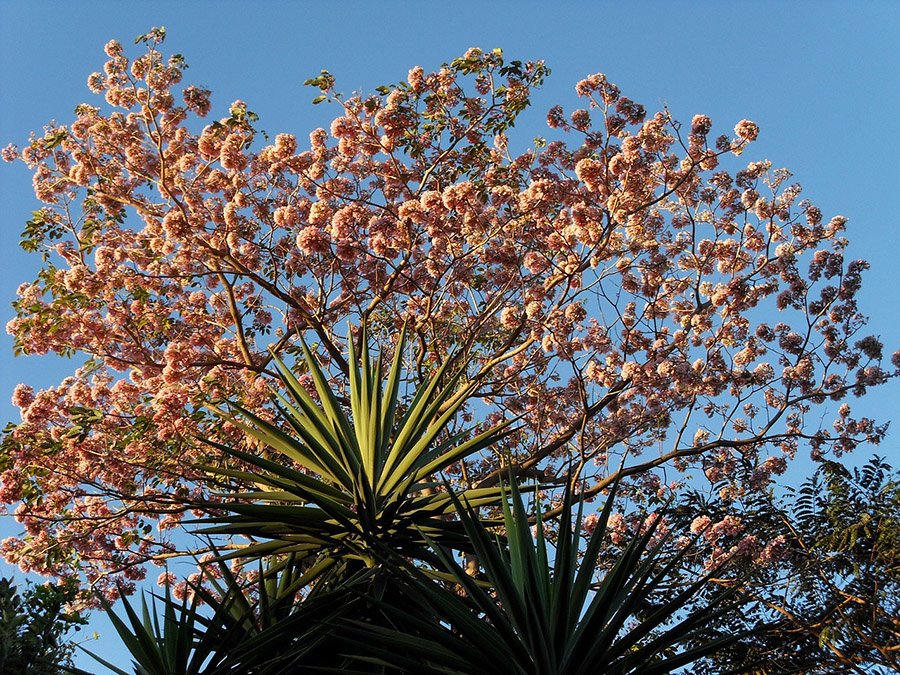
The Maquilishuat in the Ecosystem
The Maquilishuat tree is not just a pretty face; it also plays a crucial role in the ecosystem. Its flowers serve as a source of nectar for a wide variety of pollinators, including bees and butterflies.
Birds, such as hummingbirds, are also attracted to the Maquilishuat tree’s vibrant blossoms. This interaction helps in the pollination of the tree itself, as well as other plants in the vicinity.
The tree’s leaves and twigs serve as fodder for various herbivores. Due to the tree’s lightweight but strong wood, it is less prone to breakage during storms, making it an essential component of local forestry.
The wood, being light and easily workable, is often used in local carpentry and handicrafts, promoting sustainable economic activities for local communities.
The Maquilishuat tree is not just ecologically beneficial but is also part of various afforestation programs in El Salvador, which aim to counter deforestation and restore the natural landscape.
Why and When Did The Maquilishuat Become The National Tree of El Salvador?
The Maquilishuat tree was designated as the national tree of El Salvador on September 1, 1939, by legislative decree. Its designation as a national symbol was chosen over another notable tree, the Balsam.
The Maquilishuat tree gained more significance mainly because of its grandeur and the visual spectacle it creates when in full bloom, which makes it an emblem of the natural beauty of El Salvador.
Beyond its aesthetic appeal, the tree carries cultural and historical significance. The Maquilishuat tree has been a part of Salvadoran folklore for centuries, and its blooming season is often considered a time of renewal and hope.
Its pink flowers, covering the tree and falling to blanket the ground, have been romanticized in literature and local songs, representing beauty, grace, and resilience, much like the people of El Salvador themselves.
As for controversies, debates have occasionally risen about the effectiveness of the Maquilishuat as a symbol. Some argue that other trees might be more representative of Salvadoran biodiversity or cultural history. However, these debates have not overshadowed the enduring importance of the Maquilishuat as a symbol of the nation’s natural beauty and resilience.
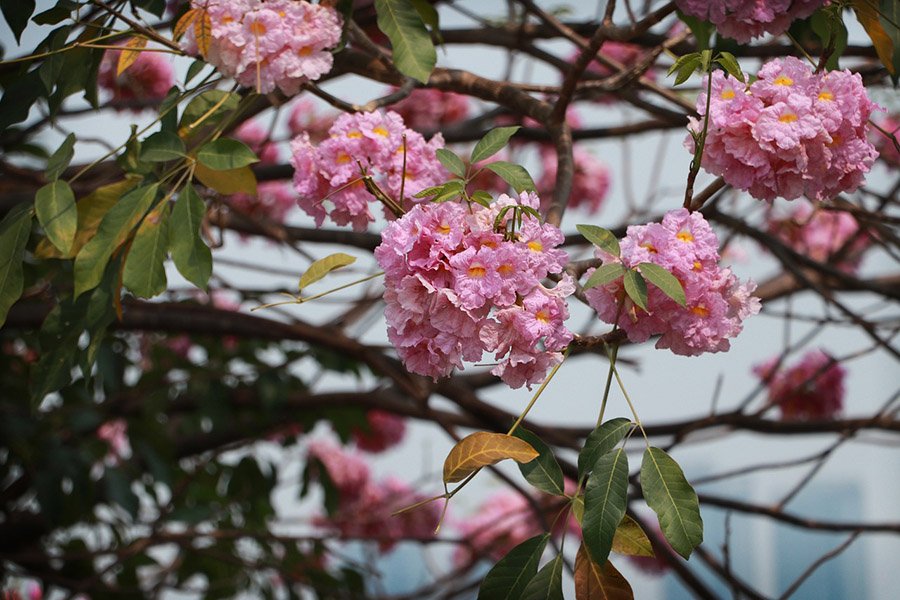
Where is the Maquilishuat Featured in El Salvador?
While the Maquilishuat tree itself doesn’t make an appearance on El Salvador’s flag or currency, its cultural prominence is hard to miss. The tree is often featured in local art, folklore, and educational materials.
During the flowering season, it’s common to find photographs and paintings of the Maquilishuat gracing calendars, postcards, and even murals throughout the country. Schools and public parks often plant Maquilishuat trees, not just for their aesthetic value but also as living symbols of national pride.
Names of the Maquilishuat Tree
The Maquilishuat goes by various names. Scientifically, it is known as Tabebuia rosea. It’s also referred to as the Rosy Trumpet Tree or Pink Poui in English. In El Salvador, it is most commonly known as “El Maquilíshuat.” The Spanish name “roble de sabana,” meaning “Savannah Oak,” is another way the tree is described.
In other countries, the tree is sometimes known by other names, often reflecting local languages and traditions. Though not an indigenous name per se, “Maquilíshuat” itself holds traditional value and is deeply embedded in Salvadoran culture.
Interesting Facts About The Maquilishuat
- Seasonal Spectacle: The Maquilishuat blooms between February and March, right in the transitional phase between El Salvador’s dry and rainy seasons. This timing makes its bloom even more dramatic, as it stands out against the generally arid landscape of that period.
- Variability in Flower Color: Not all Maquilishuat flowers are the same shade of pink. The color intensity can vary from tree to tree and even from flower to flower on the same tree.
- Lightweight Wood: The wood of the Maquilishuat is not just lightweight but also has a unique amber-yellow color with purplish veins, making it highly sought after for specialty carpentry and artistic endeavors.
- Cultural References: The Maquilishuat is frequently mentioned in Salvadoran literature and poetry, often symbolizing beauty, resilience, and the Salvadoran identity.
- Environmental Adaptability: Interestingly, the tree is quite hardy and can tolerate a range of soil types and climates, making it a favorite for urban planting projects and reforestation efforts.
- Symbiotic Relationships: The tree’s flowers serve as a food source for pollinators, thereby participating in a symbiotic relationship that aids in its own pollination as well as that of other flowering plants in the ecosystem.
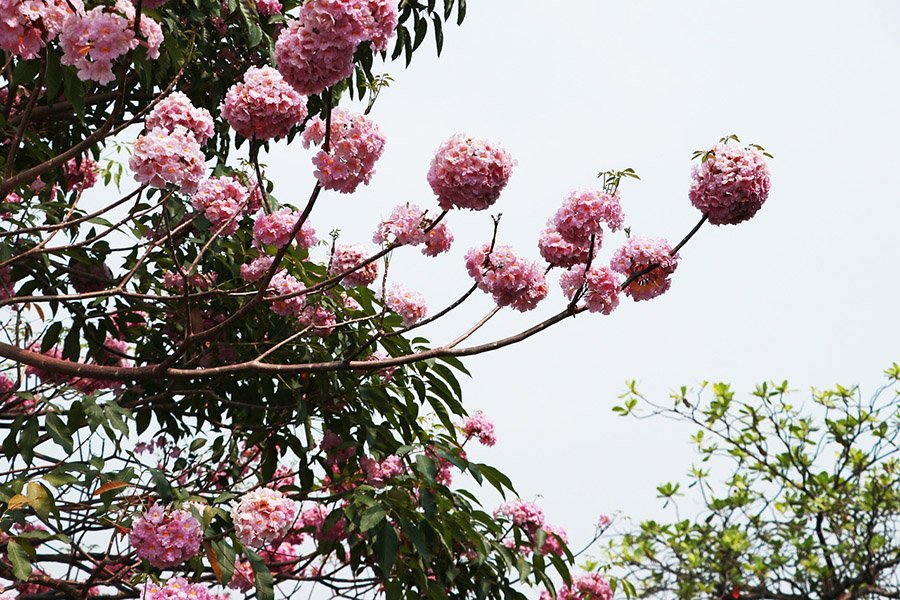
Other Beautiful Trees Native To El Salvador
- Cortez Blanco (Tabebuia ochracea): This tree, closely related to the Maquilishuat, has beautiful yellow flowers and can reach a height of up to 30 meters. It’s another spectacle during the dry season.
- Ceiba (Ceiba pentandra): Known for its expansive canopy and spiky trunk, the Ceiba is considered sacred in many Central American cultures. It can grow up to 70 meters (230 feet) and its cotton-like seed pods have various uses.
- Guava (Psidium guajava): A smaller tree, the Guava is nonetheless important both ecologically and economically. Its fruit is highly prized and rich in nutrients.
- Coyol (Acrocomia aculeata): Also known as the Coyol palm, this tree is native to El Salvador and produces a type of fruit used for oil extraction. The palm is also used to make a variety of goods, from thatched roofs to brooms.
- Nance (Byrsonima crassifolia): This tree produces small yellow fruits and is often used in reforestation efforts. It’s also a great source of food for local fauna.
What Is The National Flower of El Salvador?
The national flower of El Salvador is the Flor de Izote (Yucca gigantea). Unlike the Maquilishuat, this plant is a type of perennial shrub rather than a tree.
The Flor de Izote boasts tall flower stalks with white, bell-shaped flowers that are not only beautiful but also edible. In Salvadoran culture, Flor de Izote is often featured in traditional cuisine and its fibers have been historically used for making ropes and textiles.
Frequently Asked Questions
Why was the Maquilishuat chosen as the national tree of El Salvador?
The Maquilishuat was designated as the national tree on September 1, 1939, by legislative decree. It was chosen due to its beauty and its capacity to enliven the landscape of El Salvador, especially during its flowering season.
Can the Maquilishuat tree grow outside of El Salvador?
Yes, the Maquilishuat tree is quite hardy and can adapt to a variety of soil types and climates. However, its natural habitat is most ideally suited to the conditions found in El Salvador and neighboring regions.
What is the wood of the Maquilishuat used for?
The wood of the Maquilishuat tree is lightweight and has a unique amber-yellow color with purplish veins. It is highly prized for specialty carpentry and artistic endeavors.
How do the flowers of the Maquilishuat tree look?
The Maquilishuat tree has large and majestic pink flowers. The intensity of the pink coloration varies, making each tree unique.
Is the Maquilishuat tree related to any other trees?
Yes, it is closely related to the Cortez Blanco and Matilisguate trees, which are also members of the Tabebuia genus.
